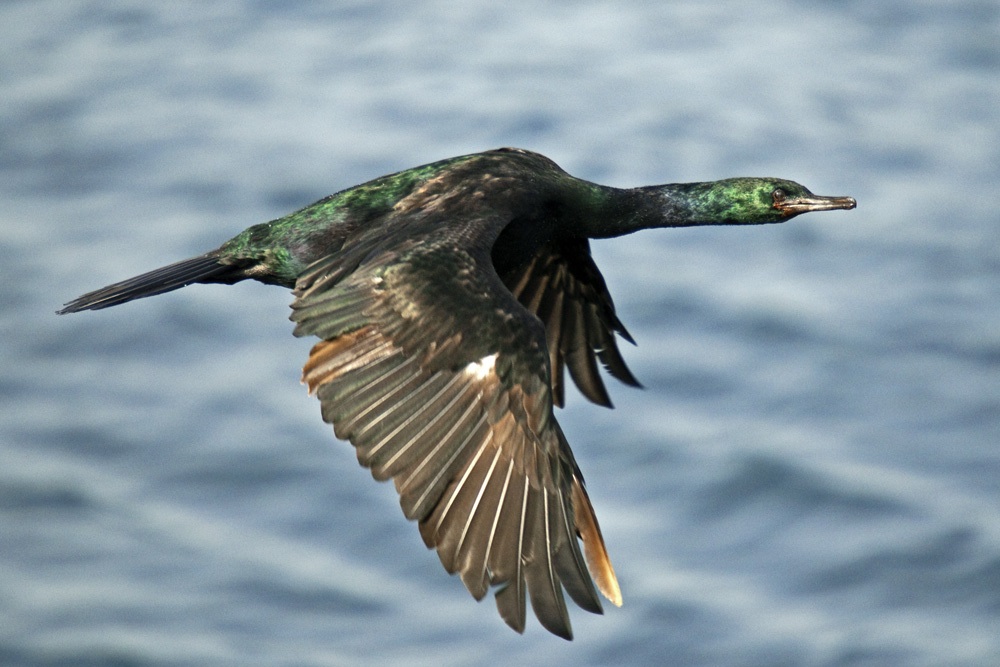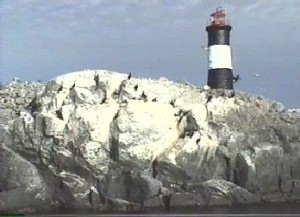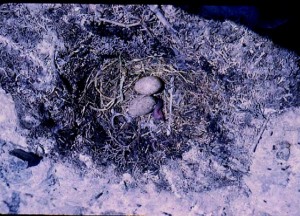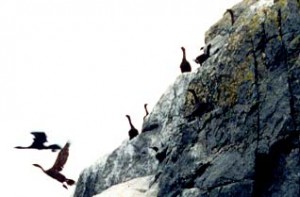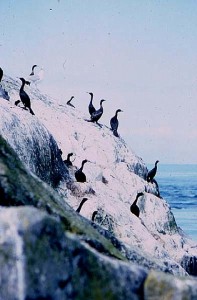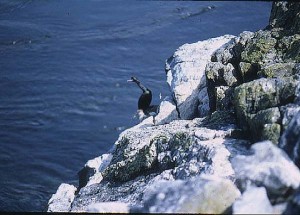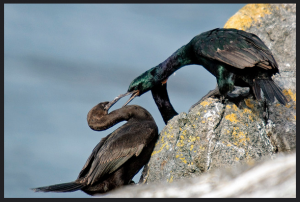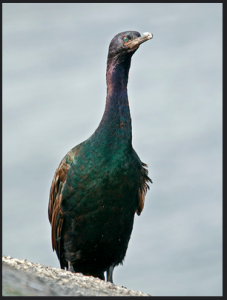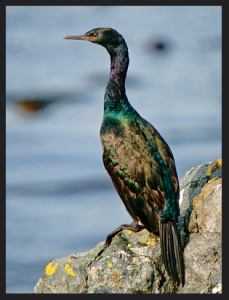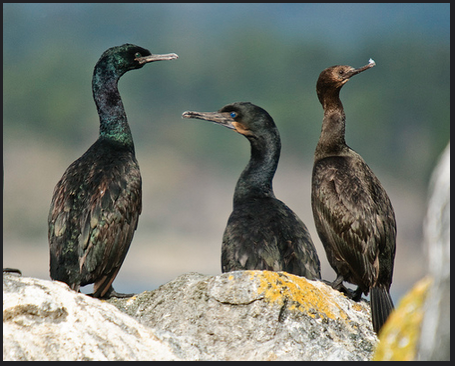See images of Pelagic Cormorants on Ryan Murphy’s Flickr site
Range of the Pelagic Cormorant:
Breeds from the Bering Sea to Japan and south to near San Diego, USA. Winters in the Aleutian Islands and along the coast from British Columbia to Baja, California.
Pelagic cormorants nest at Race Rocks and live there year-round. They prefer the cliff to the West of the camera 5, and can often be seen perched there along the cliff edge (picture above left)
Nest:
The nest is a mass of seaweed and grass on a cliff. Pelagic cormorants nest in colonies and like ledges so narrow they must land and take off facing the cliff. During the years between 1980 and 1995 numbers of nests ranged above 20. In the years 2000, 2001,2002 there was complete nest failure due to the lack of herring feed in the surrounding waters. During 2003 , 2004, and 2005 only two or three nests have been established with successful hatches.
Following are pictures taken in the nesting season by G.Fletcher in the 1980s and 1990’s when there were pelagic cormorants nesting at Race Rocks:
- The cliff on the Northwest corner of Great race Rocks would be covered with Guano by the end of the summer
- Trv Anderson took this picture in the mid-1970s
| Local Numbers of Phalacrocorax pelagicus Xmas bird count Year
2005- 20 |
|
Classification:
We have seen a marked decline in nesting of one of the four species of seabirds which has nested traditionally at Race Rocks, Pelagic Cormorants (Phalacrocorax pelagicus). By 2007, the nesting population had been reduced to one or two nests, and from 2008 to the last season (2009 ) there were no nests at all. This population crash has been common across the Gulf Islands., and the lower end of Vancouver Island and Strait of Juan de Fuca. According to the Canadian Wildlife Service, the population of this species is estimated to be at 9000 individuals, and the pelagicus subspecies is red-listed by BC – other subspecies are stable. In this attached file, I have summarized the results of several papers on research on Cormorant populations in the southern Gulf Islands and Georgia Strait. Vermeer and Rankin, 1984, did their research when the populations were on the incline, however since the 1900s, this trend has not persisted as has been reflected in the paper by Chatwin et al. The summary of their paper and the possible reasons for decline are listed near the end of this review. |
See other posts of Pelagic Cormorants at Race Rock
 The Race Rocks taxonomy is a collaborative venture originally started with the Biology and Environmental Systems students of Lester Pearson College UWC. It now also has contributions added by Faculty, Staff, Volunteers and Observers on the remote control webcams. Garry Fletcher, 2003 The Race Rocks taxonomy is a collaborative venture originally started with the Biology and Environmental Systems students of Lester Pearson College UWC. It now also has contributions added by Faculty, Staff, Volunteers and Observers on the remote control webcams. Garry Fletcher, 2003 |

